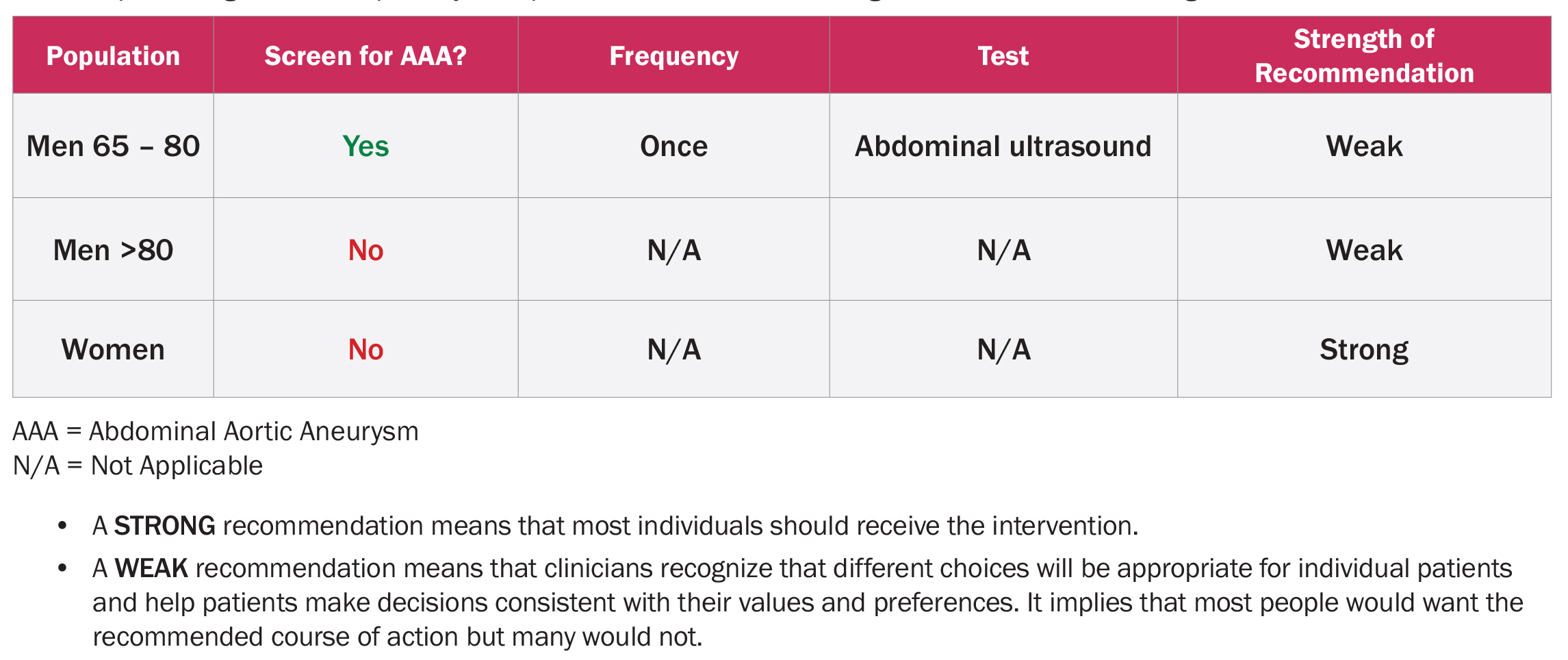Abdominal Aortic Aneurysm (AAA)—Clinician Recommendation Table
This tool provides guidance for primary care practitioners on the screening test and recommended ages to screen for AAA.
Click here to view PDF of table.
1. Why is the Canadian Task Force on Preventive Health Care (CTFPHC) making this recommendation?
- Research shows that one-time screening for AAA in ultrasound in men aged 65–80 reduces the risk of AAA-related mortality, rupture, and emergency repair.
- Some elective procedures result from identification of an AAA that might never have ruptured (overdiagnosis). However, in the judgment of the CTFPHC, this possible harm is outweighed by the likely benefit of screening in reducing rates of both rupture and AAA-related mortality.
2. Why is it a weak recommendation to screen?
- There is concern that the declining prevalence of AAA in populations similar to Canada’s (due, in part, to the steady decrease in smoking) reduces the absolute benefit of screening.
- There is also concern about over-diagnosis, and its potential for harm.
3. How should I implement a weak recommendation to screen?
- A weak recommendation implies having a discussion with patients about the benefits and harms of screening for AAA with an ultrasound to help them make a decision that is consistent with their values and preferences.
- Factors that could be considered in the decision on whether or not to screen include: a past or present history of smoking, a family history of AAA, and co-morbidities that increase the risk of procedures to repair an AAA.
4. Why is there a recommendation not to screen women?
- Women experience much lower rates of AAA than men do, and there is no direct evidence that screening women has a positive impact on their health.
5. Why should men older than 80 years not be screened?
- The benefit of screening men older than 80 years is likely to be lower than that of screening younger men. This is because men older than 80 years are more likely to experience medical conditions that increase the risk of procedures to repair an AAA.

